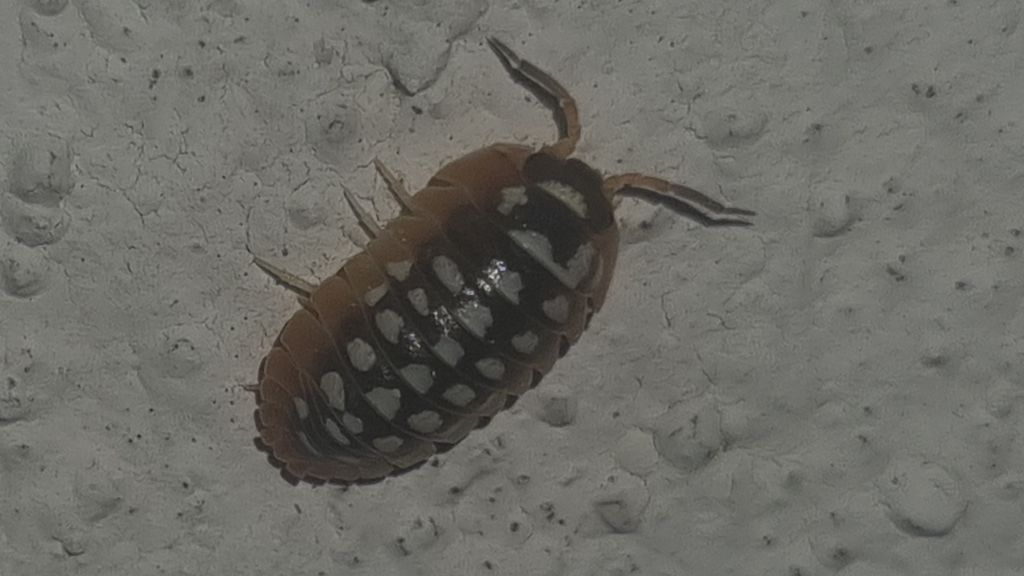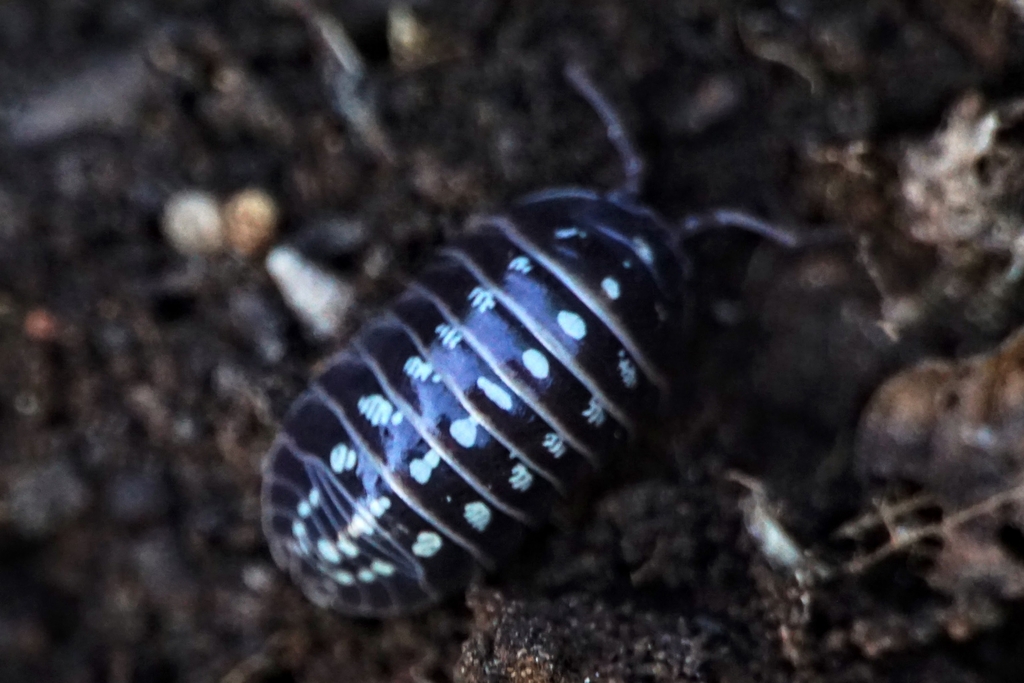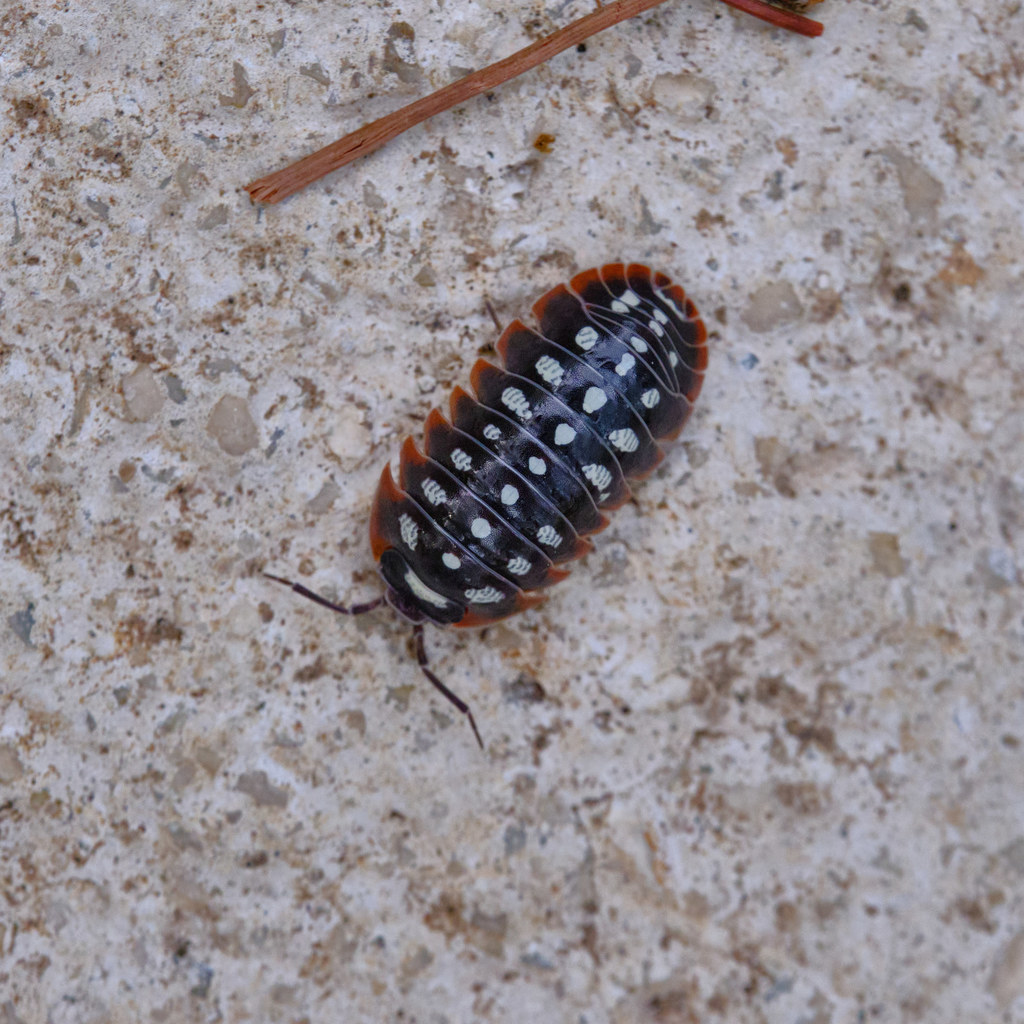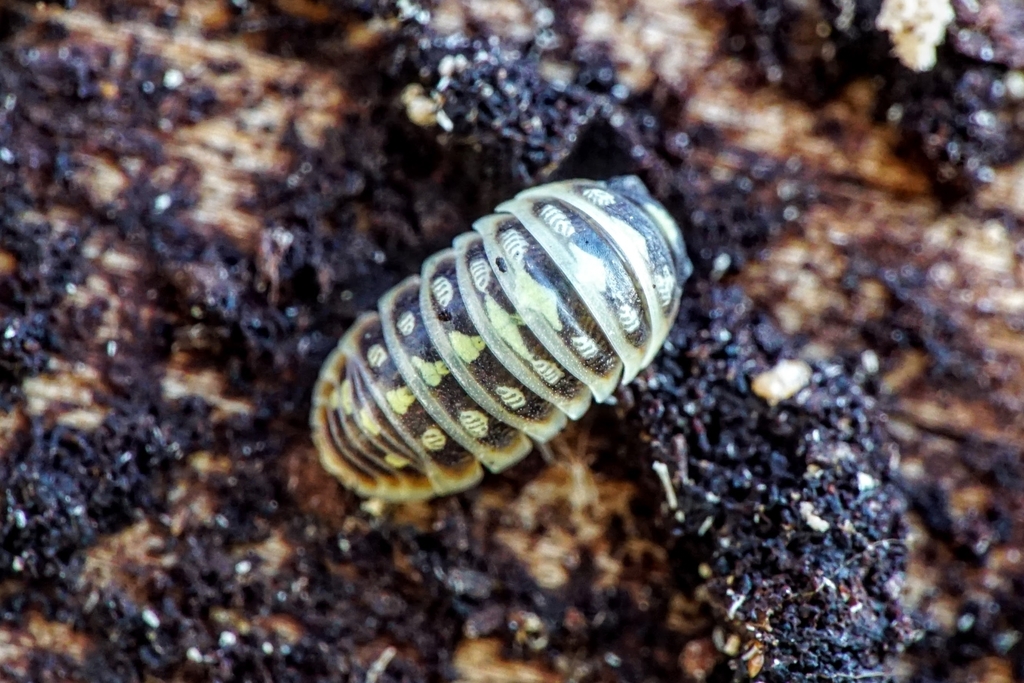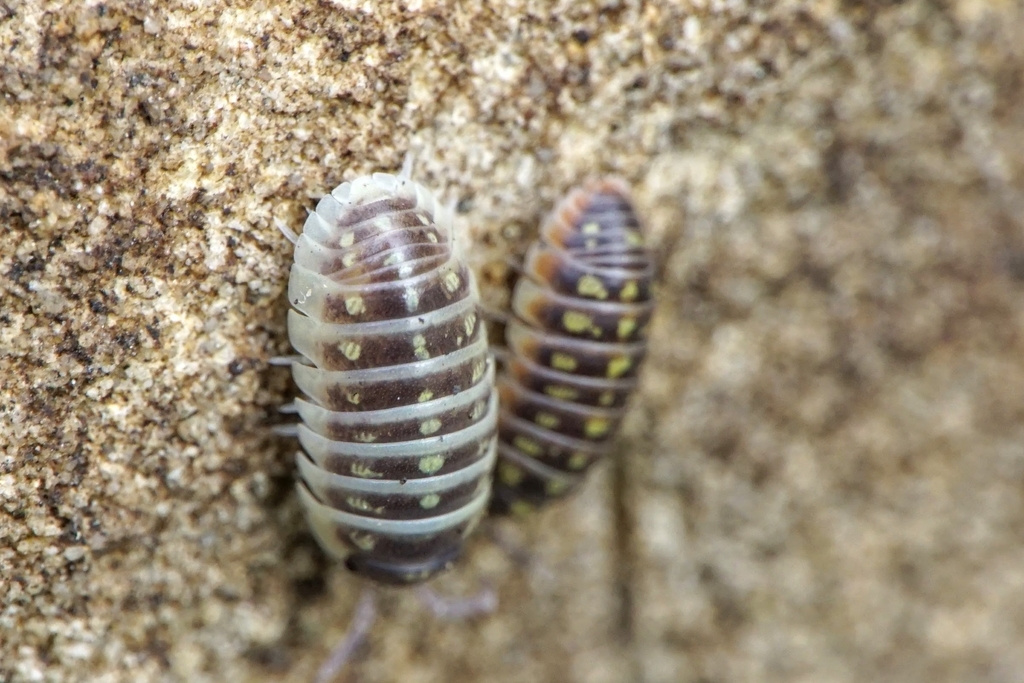| English | German | Name |
| Order | Ordnung | Isopoda |
| Suborder | Unterordnung | Oniscidea |
| Family | Familie | Armadillidiidae |
| Genus | Gattung | Armadillidium |
| Species | Art | Armadillidium klugii |
Description
Klugiis can conglobate when startled. They usually have brown to red skirt while their backs are a darker brown with three lines of spots. The colour of the spots depends on the variety. They grow up to 21 mm big.
The wild morphs can look quite different from the varieties kept in the hobby.
Distribution
This species lives in the European Balkan region. Mostly at the coastline of the Adriatic sea, this includes countries such as Croatia, Montenegro and Albania.
Care
This species requires the “typical” isopod environment. Leaf litter, white rotting wood, calcium and protein sources. They need a soil moisture gradient as well and air humidity of 50-70%.
Room temperature of 17°C to 26°C is enough.
Care guides for the varieties can vary! But that is quite normal.
In the care guides I read, Montenegros are said to grow only up to 14 or 15 mm in contrast to the general ability of A. klugii to grow up to 21 mm.
The recommended temperatures also vary by breeder.
Some say 22-24°C others 18-25°C and other others 20-24°C. This seems like they just used room temperature and this range is generally good for them.
First description
Brandt, 1833
Names
It is also called the “Clown Isopod” due to its sometimes colouful spots.
Synonyms
Armadillo astriger
Armadillo guttatus
Armadillo pustulatus
Armadillidium albanicum
Armadillidium inflatum
Armadillidium cetinjense
Subspecies
None.
Varieties
There are multiple varieties and even in the wild you can spot some oddballs!
Fist off, the varieties that have names and are currently sold:
Some “projects” and oddballs:
And, at last, patterns found in nature:
Sexing
Like all isopods. I will later on include a link on how to sex isopods.
Developement
The offspring take about seven month to grow into adults.
Behaviour
Mancae and youngsters tend to hide in the soil and only come out later on.
Trivia
Their marking resemble the Mediterranean black widow and therefore it is believed this isopod practices mimicry.
The species A. werneri and A. flavoscutatum are quite similar regarding the colouring. A third description is very similar too, but the species A. bulgaricum does not have a safe systematic status.
https://en.wikipedia.org/wiki/Armadillidium_klugii
Schmalfuss, Helmut (2013). “Revision of the Armadillidium klugii-group (Isopoda: Oniscidea)” (PDF). Stuttgarter Beitr. Naturk. A, Neue Serie. 6: 1–12.
https://insektenliebe.com/de/haltungsberichte/asseln/armadillidium-klugii-montenegro/


